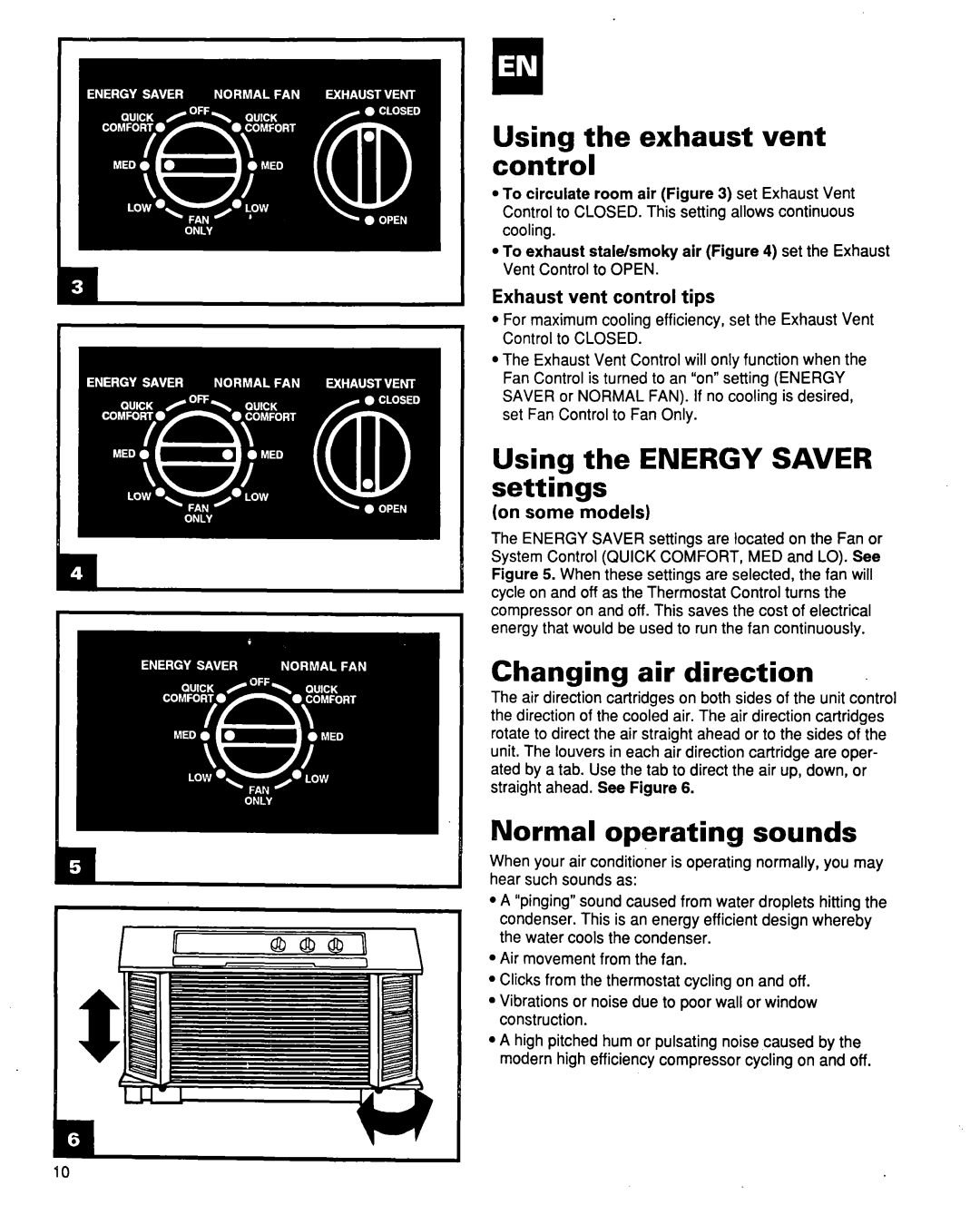
Using the exhaust vent control
l
l
To circulate room air (Figure 3) set Exhaust Vent Control to CLOSED. This setting allows continuous cooling.
To exhaust stale/smoky air (Figure 4) set the Exhaust Vent Control to OPEN.
Exhaust vent control tips
l
l
For maximum cooling efficiency, set the Exhaust Vent Control to CLOSED.
The Exhaust Vent Control will only function when the Fan Control is turned to an “on”setting (ENERGY SAVER or NORMAL FAN). If no cooling is desired, set Fan Control to Fan Only.
Using the ENERGY SAVER settings
(on some models)
The ENERGY SAVER settings are located on the Fan or System Control (QUICK COMFORT, MED and LO). See Figure 5. When these settings are selected, the fan will cycle on and off as the Thermostat Control turns the compressor on and off. This saves the cost of electrical energy that would be used to run the fan continuously.
Changing air direction
The air direction cartridges on both sides of the unit control the direction of the cooled air. The air direction cartridges rotate to direct the air straight ahead or to the sides of the unit. The louvers in each air direction cartridge are oper- ated by a tab. Use the tab to direct the air up, down, or straight ahead. See Figure 6.
Normal operating sounds
When your air conditioner is operating normally, you may hear such sounds as:
l
l
l
l
l
A “pinging”sound caused from water droplets hitting the condenser. This is an energy efficient design whereby the water cools the condenser.
Air movement from the fan.
Clicks from the thermostat cycling on and off.
Vibrations or noise due to poor wall or window construction.
A high pitched hum or pulsating noise caused by the modern high efficiency compressor cycling on and off.
